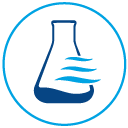
How Proper Stormwater Monitoring Helps Control Water Pollution
1. Stormwater monitoring overview
Water runoff from our agricultural fields, livestock pens, city buildings and streets, highways, industrial facilities, parking lots and construction sites carries pollutants that degrade water quality, negatively impact the abundant beneficial uses of our waters and hurt freshwater and marine life. Over the past several decades our State Water Resources Control Boards, our Regional Water Quality Control Boards, and the US Environmental Protection Agency (EPA) have made the regulation of stormwater runoff pollution and treatment of stormwater in agricultural, industrial, municipal and residential areas a priority concern.
2. How stormwater monitoring affects the environment?
For decades environmental agencies have conducted studies aimed at answering the question: how does stormwater runoff pollution affect our environment and impact our waterways? The answers have been depressingly obvious, but they have also revealed new ways to stop the environmental onslaught of pollutants into our water.
Stormwater testing to identify pollutants and sources of pollutants and stormwater monitoring to ensure that ongoing efforts to reduce stormwater runoff pollution are put into place and consistently maintained are now the norm. The great news is that these stormwater discharge regulatory efforts are creating tremendous benefits for water quality and thus for freshwater and marine ecosystems. In fact recent studies have shown that the concerted efforts California has made to improve water quality in marine ecosystems over the last decades are working to improve the overall health of many marine environments.
3. Regulations about stormwater monitoring
The studies mentioned above have led to a lot of new regulatory programs. These regulations have established many specific goals designed to use stormwater as a resource and to substantially reduce the presence of harmful contaminants, fertilizers, trash and other pollutants from entering our groundwater sources, rivers, lakes and oceans.
Municipal, regional, state and federal regulatory agencies have established stringent regulatory requirements for industrial wastewater, landfills, highways, parking lots and other land uses, Environmental laboratories work cooperatively with EPA stormwater regulations and local agencies to follow very specifically defined testing procedures in order to identify a long list of regulated pollutants. Specific pollutants have also been identified for testing in various regions and states because potentially dangerous concentrations of these pollutants are known to be located there. These identified pollutants are then flagged to be regulated even more tightly.
Recent regulatory decisions have emphasized holistic strategies for managing stormwater discharge in order to maximize community benefits as well as control pollution. By focusing on storm water as a resource, green infrastructure and new low impact development practices; communities are creating plans to capture stormwater discharge and use it in their landscape and agricultural irrigation systems and/ or groundwater recharge. At the same time these communities are removing and reducing pollutants, fertilizers and debris that previously flowed into surface waters (lakes, rivers, oceans) and leached into groundwater sources.
4. Stormwater runoff monitoring to prevent pollution
Laboratories work with communities and industries to analyze, reduce and control harmful pollutants in stormwater discharge and to discover and remediate the sources of those pollutants. This is done through the execution of the stormwater monitoring plan for your business or property. Each stormwater monitoring plan will be unique to your business, construction site or plant and will require specific remediation and control of any stormwater runoff pollution detected.
A thorough stormwater remediation plan, when fully implemented and working in conjunction with many other monitoring plans, will help your community to greatly improve its water quality and its freshwater and/or marine environments.
5. Conclusion
Torrent Laboratory offers a full array of stormwater testing and monitoring to help you meet compliance with local, state and national standards for your stormwater runoff. We can determine levels of heavy metals in your stormwater, well water or drinking water. We have the top of the line pesticide residue testing. Also included in our battery of testing options are water testing for pfoa and pfos as well as polyaromatic hydrocarbons tests. These tests detect the presence of dangerous chemicals that must be mitigated for the protection of all life on your site.
Torrent Laboratory, Inc., is a state of California certified (CAL ELAP) Laboratory which employs EPA approved test methods and services that meet all quality control analytical and documentation requirements demanded by California regulating authorities. Our final reports contain an additional attachment that includes the Federal Guidelines so that you can compare your water quality data.






